Refugees Welcome!
A brush with history
A brush with history
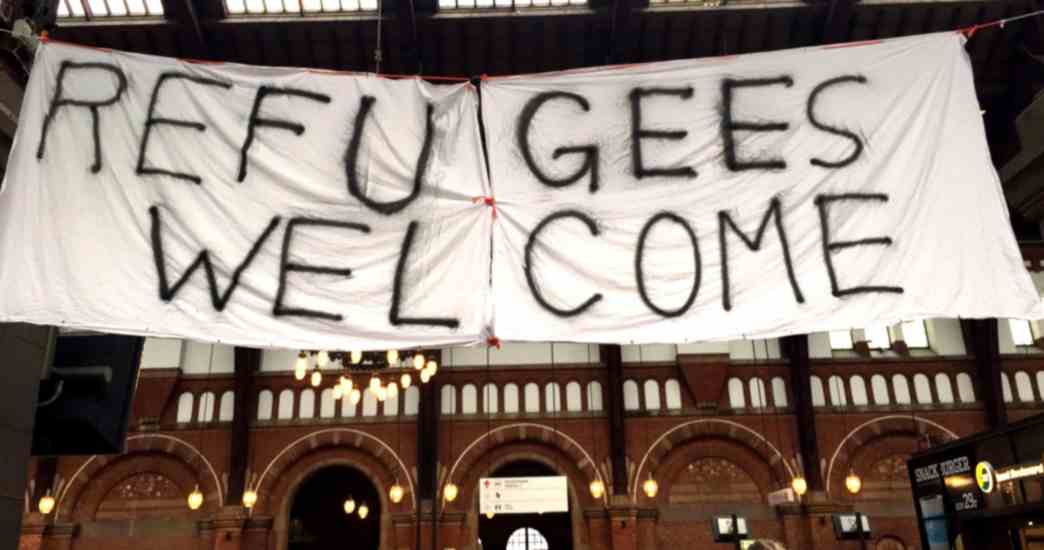
Central Station - Copenhagen
At the Tivoli Amusement Park and Pleasure Gardens we walked between a pirate ship docked on an idyllic pond dotted with geese and swans, and lurid pagodas and red paper lanterns of a China town, between bumper cars and Arabian flying carpet amusement rides.

Tivoli Gardens
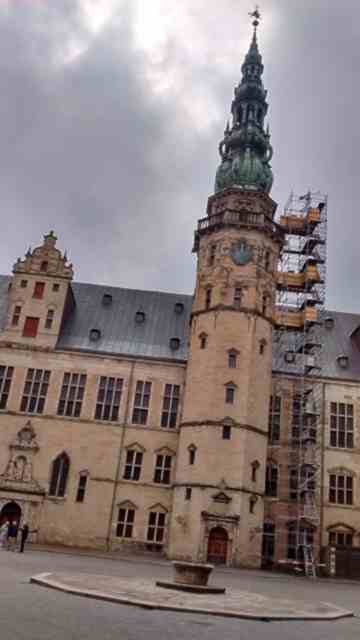
A gloomy day at Hamlet's Castle
We didn't realize it, but we were to have our own brush with history when we returned to Copenhagen's Central Station for the quick train back to Stockholm, our original destination.
Immediately through the eastern doors of the Central Station is the Tivoli Gardens. To the west is the rest of medieval and modern Copenhagen. Running north and south, underneath the station's great hall, run 10 or 12 tracks connecting the rest of Denmark and the rest of Europe.
As we entered the station, a large improvised banner made of bed sheets spread over the busiest public part of terminal read in English, "Refugees Welcome”
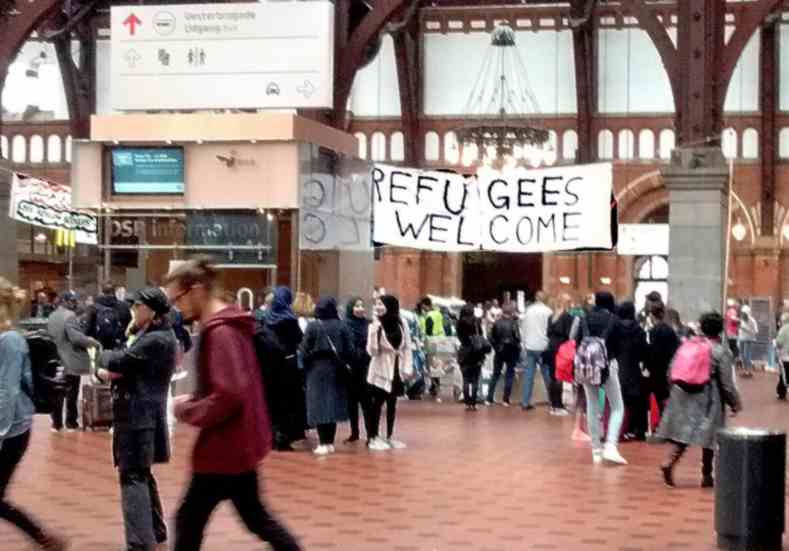
Central Sta ion - Copenhagen
Below the two banners were dozens of large boxes filled with blankets, sweaters, snow suits and other articles of clothing cordoned off by Copenhagen police, not to guard the boxes but to welcome the hundreds of Syrian refugees that were that day in transit through Copenhagen's Central Station on their way to Stockholm.
Other volunteers helped coordinate the distribution of the clothing and helped with the confusing train schedules. Few refugees know English and probably none knew Danish.
A number of what looked like large, extended families -- babes in arms and toddlers, uncles, fathers, sisters, wives in dark headscarves -- huddled together, banked against sleeping bags and small bundles of possessions. In a corner amid the usual hubbub of station chatter and noises, a lone Arabic boy played a minor melody on an accordion.

The next day we would partly share the refugees' journey.
Malmö is Sweden's third largest city and has less than 315,000 inhabitants in the city proper. The Öresund Bridge cheaply and efficiently connects Malmö and the rest of Sweden to Copenhagen and to Europe. It's the natural place for less wealthy immigrants to land and stay.
Years before when more than a million Swedes emigrated from Sweden, Gothenburg, a larger city farther north on the North Sea, would have been the point from which they sailed to America and other places. That was the reason for our trip to Sweden, to reconnect to 2nd generation cousins who did not come to America.
Sweden is not without friction with their immigrant communities. But even so, Sweden willingly accepts a disproportionate number of the Syrian refugees. This year, Sweden has accepted over 10,000 unaccompanied children refugees and found homes for them.
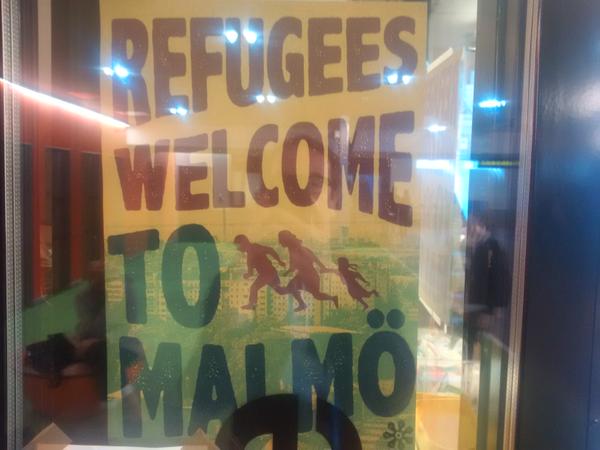
Sign in Malmö*
A sweet, shy girl in scarf, perhaps the daughter, niece or wife of the man next to her and perhaps the only one who knew any English, asked me while we were delayed on the train still at the station, "Stockholm, yes? Stockholm, yes?"
I'm not sure if she asked when does the train arrive but I pointed to the 14:30 arrival time on the ticket now hours delayed.
A babbling boy of two slept on a table between the seats. Occasionally he called “Mama. Mama”, but nobody answered. Children played in the aisles. The men waited outside the train smoking thin brown cigarettes. The stern female train conductor, who had previously threatened anyone smoking "you are not welcome on the train any longer", smiled approvingly at the children at play.
Once started, the train made several unscheduled stops as the police removed a man from the train, perhaps for smoking.
At the time, we didn't realize the train was full of refugees. We should have guessed when the usual Swedish and English announcements were now being made in Arabic as well.
The power outage had affected all trains to Stockholm. The train company decided to bus all travelers to cities other than Stockholm to their destinations. By accident we were on this ‘express’ train direct to Stockholm.
As we made our way through the crowded Stockholm Central Station the police in bright green jackets surrounded and cordoned off the exit ways. More trouble?
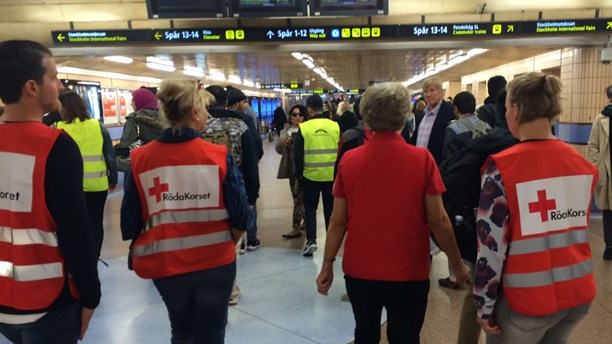
Stockholm Center Station*
Välkommen till Sverige. Välkomna!
Denmark/Sweden
--September 14/15, 2015
(* photos from web)
IMPORTANT UPDATE: Since the writing of this, Sweden has increasing tightened their border control and refugees cannot cross as freely as depicted here.
(* photos from web)
IMPORTANT UPDATE: Since the writing of this, Sweden has increasing tightened their border control and refugees cannot cross as freely as depicted here.